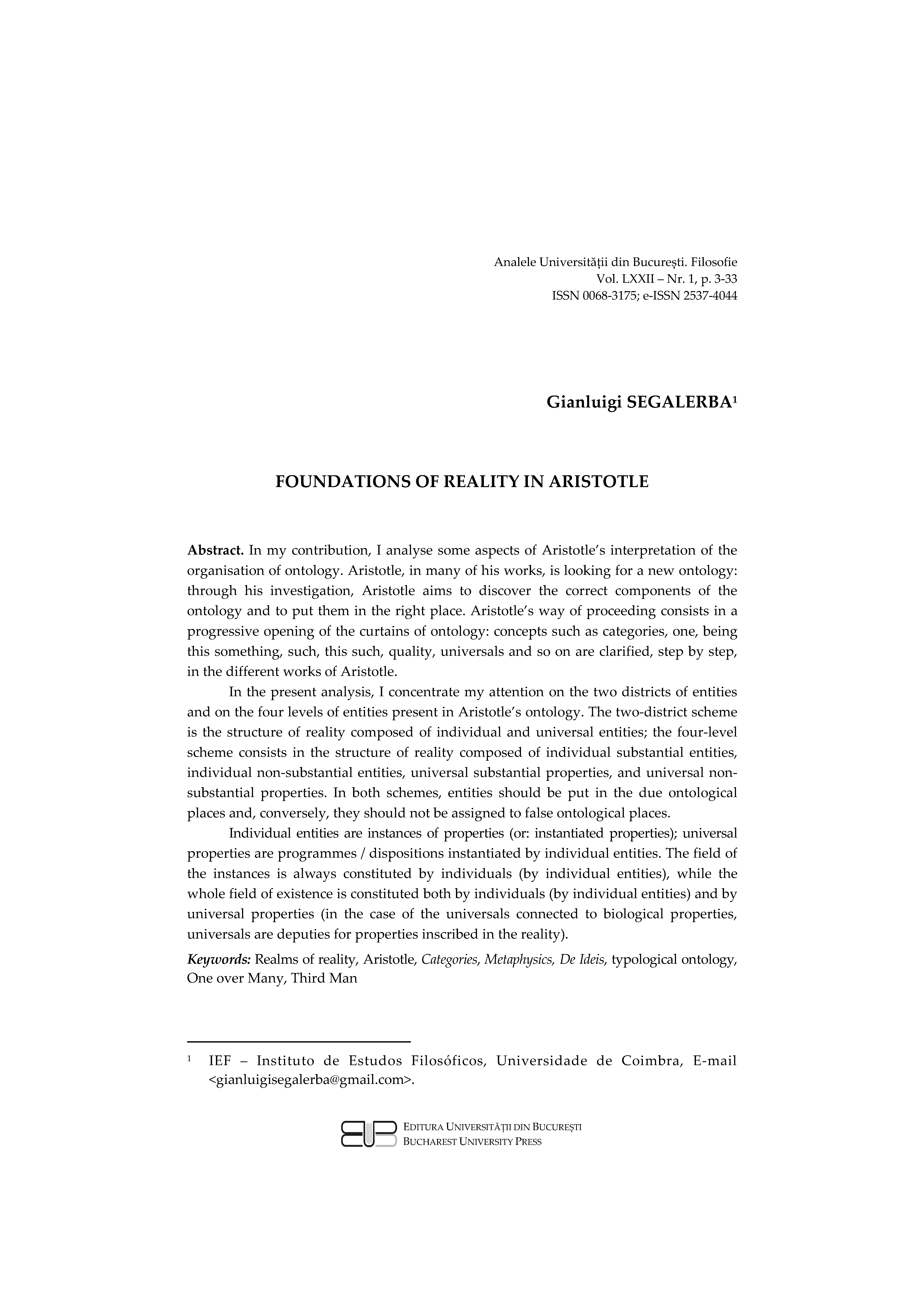FOUNDATIONS OF REALITY IN ARISTOTLE
DOI:
https://doi.org/10.62229/aubpslxxi/1_23/1Keywords:
Realms of reality, Aristotle, Categories, Metaphysics, De Ideis, typological ontology, One over Many, Third ManAbstract
In my contribution, I analyse some aspects of Aristotle’s interpretation of the organisation of ontology. Aristotle, in many of his works, is looking for a new ontology: through his investigation, Aristotle aims to discover the correct components of the ontology and to put them in the right place. Aristotle’s way of proceeding consists in a progressive opening of the curtains of ontology: concepts such as categories, one, being this something, such, this such, quality, universals and so on are clarified, step by step, in the different works of Aristotle.
In the present analysis, I concentrate my attention on the two districts of entities and on the four levels of entities present in Aristotle’s ontology. The two-district scheme is the structure of reality composed of individual and universal entities; the four-level scheme consists in the structure of reality composed of individual substantial entities, individual non-substantial entities, universal substantial properties, and universal nonsubstantial properties. In both schemes, entities should be put in the due ontological places and, conversely, they should not be assigned to false ontological places.
Individual entities are instances of properties (or: instantiated properties); universal properties are programmes / dispositions instantiated by individual entities. The field of the instances is always constituted by individuals (by individual entities), while the whole field of existence is constituted both by individuals (by individual entities) and by universal properties (in the case of the universals connected to biological properties, universals are deputies for properties inscribed in the reality).





